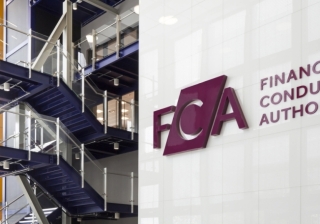Home improvement surge offers second charge opportunity
Most of us have probably looked around our homes and questioned whether they really meet our needs for the long term, particularly over the last year and a half.

"If a client approaches their adviser, looking to raise funds for a home improvement project, then a remortgage will often be the first option discussed. But in reality, doing so is often a costly move."
One of the inevitable by-products of the pandemic has been that our home has had to take on additional roles; it’s no longer simply where you live but has also had to double up as a school, a workplace and perhaps for some even, a gym.
And that’s led to some real soul-searching about what the next step should be. For some, it has meant looking to purchase somewhere new. The fierce activity levels in the purchase market in the first half of 2021 are testament not only to the impact of the stamp duty holiday but also to the sheer numbers of people who have accepted that they need more from their home.
Yet there’s a significant number of homeowners who are taking a different tack. They may have been turned off by the bunfight that the housing market has become of late, or perhaps they simply see that their existing property holds far more potential than is currently being realised.
So instead of trying to move up the housing ladder, these owners are looking to stay where they are but improve their home so that it better meets their needs.
And it would appear that plenty of homeowners are doing just that. A recent study by Shawbrook Bank found that a whopping 81% of second charge advisers reported a jump in demand for financing for home refurbishment projects over the last six months.
The home improvement projects they were undertaking varied significantly, from something relatively small like fitting a new kitchen or bathroom, to a more substantial change to their home like having an extension built or carrying out a loft conversion.
Why second charges are an option
If a client approaches their adviser, looking to raise funds for a home improvement project, then a remortgage will often be the first option discussed. But in reality, doing so is often a costly move.
For example, there’s a good chance the client is locked into a fixed rate period on their mortgage, meaning they will have to hand over early repayment charges in order to remortgage. These could easily run into the thousands.
And then there’s the fact that by doing so, they will be giving up their current rate, with the risk that the additional borrowing will push them into a higher loan-to-value band and with it an even higher interest rate.
That’s why second charge mortgages have become such an appealing alternative. As the client is borrowing against the equity they already hold in the property, that original mortgage is left untouched. That means no ERCs to worry about, no danger of abandoning a cracking interest rate or being shunted into a higher LTV band.
Instead, the client can raise the funds they need in a simple and straightforward way, and get on with transforming their home into something more suitable for their needs.
Demand is only going to grow
It’s worth reflecting on the confidence that advisers have in the prospects for the second charge market. That Shawbrook study found three-quarters of brokers who specialise in second charge mortgages are confident about the sector’s outlook for the rest of the year. That’s a pretty dramatic change from the paltry 19% who said they felt confident back in December.
It’s an enormous turnaround, and testament to a few different factors. The underlying need and demand for second charge mortgages is a big driver in that confidence of course, but so too is the attitude of lenders. Over recent months we’ve seen incredible levels of competition with the second charge market.
Lenders have taken stock of the state of the industry, have listened properly to feedback from advisers, and have revised their product terms, criteria and process to really raise the bar in terms of the loans and service they provide.
It’s been so encouraging to see and bodes well for the future of the second charge loan sector. Ultimately, the number of clients who are going to want to consider a second charge mortgage is only likely to grow in the months and years ahead. As a result, advisers who want to service those clients need to think carefully about which specialist advisers they can work with and who can ensure those clients continue to receive the highest standards of guidance and care.
Breaking news
Direct to your inbox:
More
stories
you'll love:
This week's biggest stories:
FCA
Firms required to report complaints involving vulnerable customers under simplified FCA rules

Santander
Santander joins mortgage price war with new rates from 3.51%

FCA
FCA sets out timeline for mortgage rule changes

Inflation
Bank of England set to cut rates as inflation falls to eight-month low

This week's biggest stories:
FCA
Firms required to report complaints involving vulnerable customers under simplified FCA rules

Santander
Santander joins mortgage price war with new rates from 3.51%

FCA
FCA sets out timeline for mortgage rule changes

Inflation
Bank of England set to cut rates as inflation falls to eight-month low

Nationwide
FCA fines Nationwide £44m for inadequate financial crime controls

FCA
FCA announces new measures to support growth of mutuals sector
